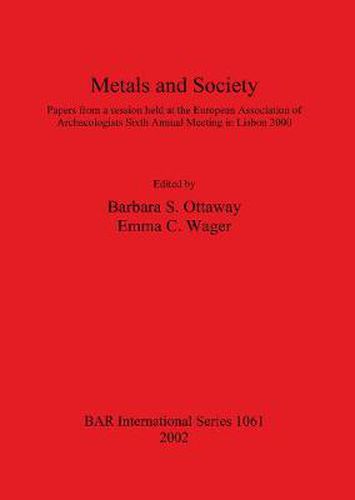Readings Newsletter
Become a Readings Member to make your shopping experience even easier.
Sign in or sign up for free!
You’re not far away from qualifying for FREE standard shipping within Australia
You’ve qualified for FREE standard shipping within Australia
The cart is loading…






This title is printed to order. This book may have been self-published. If so, we cannot guarantee the quality of the content. In the main most books will have gone through the editing process however some may not. We therefore suggest that you be aware of this before ordering this book. If in doubt check either the author or publisher’s details as we are unable to accept any returns unless they are faulty. Please contact us if you have any questions.
Thirteen papers, from the EEA Sixth Annual Meeting held in Lisbon in 2000, aim to explain the role that metal and metalworking played in past societies and to integrate analytical data with theoretical, contextual and ethno-archaeological studies’. Divided into four sections, contributions examine the development of metallurgy in the Chalcolithic and early Bronze Age Levant and Europe; evidence for metalworking in Wales, central Europe and Portugal; ornate metalworking in Iron Age Norway, medieval Russia and modern Portugal and Cairo and, finally, the social and cultural function of metalworking and metal objects.
$9.00 standard shipping within Australia
FREE standard shipping within Australia for orders over $100.00
Express & International shipping calculated at checkout
This title is printed to order. This book may have been self-published. If so, we cannot guarantee the quality of the content. In the main most books will have gone through the editing process however some may not. We therefore suggest that you be aware of this before ordering this book. If in doubt check either the author or publisher’s details as we are unable to accept any returns unless they are faulty. Please contact us if you have any questions.
Thirteen papers, from the EEA Sixth Annual Meeting held in Lisbon in 2000, aim to explain the role that metal and metalworking played in past societies and to integrate analytical data with theoretical, contextual and ethno-archaeological studies’. Divided into four sections, contributions examine the development of metallurgy in the Chalcolithic and early Bronze Age Levant and Europe; evidence for metalworking in Wales, central Europe and Portugal; ornate metalworking in Iron Age Norway, medieval Russia and modern Portugal and Cairo and, finally, the social and cultural function of metalworking and metal objects.